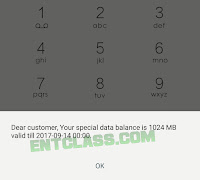Windows system key combinations*.F1: Help*.CTRL+ESC: OpenStartmenu*.ALT+TAB: Switch between open programs*.ALT+F4: Quit program*.SHIFT+DELETE: Delete item permanently*.Windows Logo+L: Lock the computer (without using CTRL+ALT+DELETE)Windows program key combinations*.CTRL+C: Copy*.CTRL+X: Cut*.CTRL+V: Paste*.CTRL+Z: Undo*.CTRL+B: Bold*.CTRL+U: Underline*.CTRL+I: ItalicMouse click/keyboard modifier combinations for shell objects*.SHIFT+right click: Displays a shortcut menu containing alternative commands*.SHIFT+double click: Runs the alternate default command (the second item on the menu)*.ALT+double click: Displays properties*.SHIFT+DELETE: Deletes an item immediately without placing it in the Recycle BinGeneral keyboard-only commands*.F1: Starts Windows Help*.F10: Activates menu bar options*.SHIFT+F10 Opens a shortcut menu for the selected item (thisis the same as right-clicking an object*.CTRL+ESC: Opens theStartmenu (use the ARROW keys to select an item)*.CTRL+ESC or ESC: Selects theStartbutton (press TAB to select the taskbar, or press SHIFT+F10 for a context menu)*.CTRL+SHIFT+ESC: Opens Windows Task Manager*.ALT+DOWN ARROW: Opens a drop-down list box*.ALT+TAB: Switch to another running program (hold down the ALT key and then press theTAB key to view the task-switching window)*.SHIFT: Press and hold down the SHIFT key while you inserta CD-ROM to bypass the automatic-run feature*.ALT+SPACE: Displays the main window'sSystemmenu (from theSystemmenu, you can restore, move, resize, minimize, maximize, or close the window)*.ALT+- (ALT+hyphen): Displays the Multiple DocumentInterface (MDI) child window'sSystemmenu (from the MDI child window'sSystemmenu, you can restore, move, resize, minimize, maximize, or close the child window)*.CTRL+TAB: Switch to the next child window of a Multiple Document Interface (MDI) program*.ALT+underlined letter in menu: Opens the menu*.ALT+F4: Closes the current window*.CTRL+F4: Closes the current Multiple Document Interface (MDI) window*.ALT+F6: Switch between multiple windows in the same program (for example, when the NotepadFinddialog box is displayed, ALT+F6 switches between theFinddialog box and the main Notepad window)Shell objects and general folder/Windows Explorer shortcutsFor a selected object:*.F2: Rename object*.F3: Find all files*.CTRL+X: Cut*.CTRL+C: Copy*.CTRL+V: Paste*.SHIFT+DELETE: Delete selection immediately, without moving the item to the RecycleBin*.ALT+ENTER: Open the properties for the selected objectTo copy a filePress and hold down the CTRL key while you drag the file to another folder.To create a shortcutPress and hold down CTRL+SHIFT while you drag a file to the desktop or a folder.General folder/shortcut control*.F4: Selects theGo To A Different Folderbox and moves down the entries in the box (if the toolbar is active in Windows Explorer)*.F5: Refreshes the current window.*.F6: Moves among panes in Windows Explorer*.CTRL+G: Opens the Go To Folder tool (in Windows 95 Windows Explorer only)*.CTRL+Z: Undo the last command*.CTRL+A: Select all the items in the current window*.BACKSPACE: Switch to the parent folder*.SHIFT+click+Closebutton: Forfolders, close the current folder plus all parent foldersWindows Explorer tree control*.Numeric Keypad *: Expands everything under the current selection*.Numeric Keypad +: Expands the current selection*.Numeric Keypad -: Collapses the current selection.*.RIGHT ARROW: Expands the current selection if it is not expanded, otherwise goes to the first child*.LEFT ARROW: Collapses the current selection if it is expanded, otherwise goes to the parentProperties control*.CTRL+TAB/CTRL+SHIFT+TAB: Move through the property tabsAccessibility shortcuts*.Press SHIFT five times: Toggles StickyKeys on and off*.Press down and hold the right SHIFT key for eight seconds: Toggles FilterKeys on and off*.Press down and hold the NUM LOCK key for five seconds: Toggles ToggleKeys on and off*.Left ALT+left SHIFT+NUM LOCK: Toggles MouseKeys on and off*.Left ALT+left SHIFT+PRINT SCREEN: Toggles high contrast on and offMicrosoft Natural Keyboard keys*.Windows Logo:Startmenu*.Windows Logo+R:Rundialog box*.Windows Logo+M: Minimize all*.SHIFT+Windows Logo+M: Undo minimize all*.Windows Logo+F1: Help*.Windows Logo+E: Windows Explorer*.Windows Logo+F: Find files or folders*.Windows Logo+D: Minimizes all open windows and displays the desktop*.CTRL+Windows Logo+F: Find computer*.CTRL+Windows Logo+TAB: Moves focus from Start, to the Quick Launch toolbar, to the system tray (use RIGHT ARROW or LEFT ARROW to move focus to items on the Quick Launch toolbar and the system tray)*.Windows Logo+TAB: Cycle through taskbar buttons*.Windows Logo+Break:System Propertiesdialog box*.Application key: Displays a shortcut menu for the selected itemMicrosoft Natural Keyboard with IntelliType software installed*.Windows Logo+L: Log off Windows*.Windows Logo+P: Starts Print Manager*.Windows Logo+C: Opens Control Panel*.Windows Logo+V: Starts Clipboard*.Windows Logo+K: OpensKeyboard Propertiesdialog box*.Windows Logo+I: OpensMouse Propertiesdialog box*.Windows Logo+A: Starts Accessibility Options (if installed)*.Windows Logo+SPACEBAR: Displays the list of Microsoft IntelliType shortcut keys*.Windows Logo+S: Toggles CAPS LOCK on and offDialog box keyboard commands*.TAB: Move to the next control in the dialog box*.SHIFT+TAB: Move to the previous control in the dialog box*.SPACEBAR: If the current control is a button, this clicks the button. If the current control is a check box, this toggles the check box. If the current control is an option, this selects the option.*.ENTER: Equivalent to clickingthe selected button (the button with the outline)*.ESC: Equivalent to clicking theCancelbutton*.ALT+underlined letter in dialog box item: Move to the corresponding item
Bloggerdroidseo is a Blogging hub for Bloggers and Internet marketers to learn about tricks of Blogging, WordPress, Affiliate marketing, SEO and how to make money online.
Pages
▼






No comments:
Post a Comment